Influence Evaluation of Tungsten Content on Microstructure and Properties of Cu-W Composite
Abstract
1. Introduction
2. Materials and Methods
3. Results and Discussion
4. Conclusions
- (1)
- With the increase in W content, the Cu matrices divided into finer and more uniform grains, but the W particles tended to agglomerate and distribute along tearing edges.
- (2)
- With the increase in W content, the density and electrical conductivity of the Cu-W composites decreased, while their compressive yield strengths and hardness gradually increased. When compared with the pure Cu, the hardness of the Cu-10 wt% W, Cu-20 wt% W and Cu-30 wt% W composites increased by 48.58%, 71.28% and 82.74%, respectively. When compared with the pure Cu, the yield strength of the Cu-10 wt% W, Cu-20 wt% W and Cu-30 wt% W composites increased by 172.17%, 280.15% and 338.21%, respectively.
- (3)
- The arc of the pure Cu contact was relatively stable. When the W content increased to 10 wt%, the discharge phenomenon weakened. As the W content continued to increase, the arc burning times of the Cu-W composite contacts began to fluctuate.
- (4)
- There was a mass loss in both the cathode and anode contacts of the pure Cu. However, the Cu-W composite contacts experienced the following mass transfers: the anode weight increased, while the cathode weight decreased.
- (5)
- The addition of the W particles changed the non-uniform ablation of the pure copper, and the surface ablation of the Cu-W composite contacts was uniform.
Author Contributions
Funding
Institutional Review Board Statement
Informed Consent Statement
Data Availability Statement
Acknowledgments
Conflicts of Interest
References
- Zhang, L.; Yu, J.; Wang, W.; Xiang, Z.; Wang, E. The Effect of Electromagnetic Stirring on the Microstructure Evolution of Cu-15%Co Alloy. Metals 2018, 8, 869. [Google Scholar] [CrossRef]
- Yang, Y.; Kuang, G.; Li, R. Optimizing the Electrical and Mechanical Properties of Cu-Cr Alloys by Hf Microalloying. Metals 2022, 12, 485. [Google Scholar] [CrossRef]
- Hernandez, O.; Aguilar, C.; Medina, A. Effects of Mo Concentration on the Structural and Corrosion Properties of Cu-Alloy. Metals 2019, 9, 1307. [Google Scholar] [CrossRef]
- Nazeer, F.; Wu, H.; Malik, A.; Meng, X.; Li, C.; Long, J. Mechanical Properties of Cu-GO Composite by Varying GO Mesh Sizes. Metals 2022, 12, 601. [Google Scholar] [CrossRef]
- Han, Y.; Li, S.; Cao, Y.; Li, S.; Yang, G.; Yu, B.; Song, Z.; Wang, J. Mechanical Properties of Cu-W Interpenetrating-Phase Composites with Different W-Skeleton. Metals 2022, 12, 903. [Google Scholar] [CrossRef]
- Nguyen Thi Hoang, O.; Nguyen Hoang, V.; Kim, J.-S.; Dudina, D.V. Structural Investigations of TiC-Cu Nanocomposites Prepared by Ball Milling and Spark Plasma Sintering. Metals 2017, 7, 123. [Google Scholar] [CrossRef]
- Chen, H.; Liu, C.; Chu, X.; Zhang, T.; Zheng, J. Corrosion Behavior and Microstructure of Cu-Based Composite Coatings Deposited by Cold Spraying. Metals 2022, 12, 955. [Google Scholar] [CrossRef]
- Saodaen, R.; Janmanee, P.; Rodchanarowan, A. Characteristics of Ternary Metal (Cu-Ni-TiN) Electrodes Used in an Electrical Discharge Machining Process. Metals 2021, 11, 694. [Google Scholar] [CrossRef]
- Pan, S.; Zheng, T.; Yao, G.; Chi, Y.; de Rosa, I.; Li, X. High-strength and high-conductivity in situ Cu-TiB2 nanocomposites. Mater. Sci. Eng. A 2022, 831, 141952. [Google Scholar] [CrossRef]
- Akbarpour, M.R. Effects of mechanical milling time on densification, microstructural characteristics and hardness of Cu-SiC nanocomposites prepared by conventional sintering process. Mater. Chem. Phys. 2021, 261, 124205. [Google Scholar] [CrossRef]
- Câmara, N.T.; Raimundo, R.A.; Lourenço, C.S.; Morais, L.M.F.; Silva, D.D.S.; Gomes, R.M.; Morales, M.A.; Macedo, D.A.; Gomes, U.U.; Costa, F.A. Impact of the SiC addition on the morphological, structural and mechanical properties of Cu-SiC composite powders prepared by high energy milling. Adv. Powder Technol. 2021, 32, 2950–2961. [Google Scholar] [CrossRef]
- Shu, D.; Li, X.; Yang, Q. Effect on Microstructure and Performance of B4C Content in B4C/Cu Composite. Metals 2021, 11, 1250. [Google Scholar] [CrossRef]
- Pingale, A.D.; Owhal, A.; Katarkar, A.S.; Belgamwar, S.U. Fabrication and tribo-mechanical performance of Cu@Al2O3 composite. Mater. Today Proc. 2022, 64, 1175–1181. [Google Scholar] [CrossRef]
- Zhang, Y.-S.; Liu, Y.; Tang, Y.-Z.; Sun, Z.; Tan, Y.-H.; Fan, X.-W.; Shi, H.-J.; Du, P.-k. Preparation of ultra-thin sandwich Cu-Cu/CNTs-Cu composite foil with high tensile strength by electrodeposition. J. Electroanal. Chem. 2022, 918, 116495. [Google Scholar] [CrossRef]
- Yin, L.; Han, L.; Wang, J.; Zhang, A.; Liu, D.; Luo, L.; Huang, Y.; Wang, Z. Formation and properties of ZrO2-Cu composite nanoglass films. Vacuum 2020, 173, 109113. [Google Scholar] [CrossRef]
- Fathy, A.; Elkady, O.; Abu-Oqail, A. Synthesis and characterization of Cu-ZrO2 nanocomposite produced by thermochemical process. J. Alloys Compd. 2017, 719, 411–419. [Google Scholar] [CrossRef]
- Fathy, A.; Wagih, A.; Abu-Oqail, A. Effect of ZrO2 content on properties of Cu-ZrO2 nanocomposites synthesized by optimized high energy ball milling. Ceram. Int. 2019, 45 Pt A, 2319–2329. [Google Scholar] [CrossRef]
- Singh, M.; Ambedkar, A.K.; Tyagi, S.; Kumar, V.; Yadav, P.; Kumar, A.; Gautam, Y.K.; Singh, B.P. Room temperature photoluminescence and spectroscopic ellipsometry of reactive co-sputtered Cu-doped ZnO thin films. Optik 2022, 257, 168860. [Google Scholar] [CrossRef]
- Vidyuk, T.M.; Dudina, D.V.; Korchagin, M.A.; Gavrilov, A.I.; Ukhina, A.V.; Bulanova, U.E.; Legan, M.A.; Novoselov, A.N.; Esikov, M.A.; Anisimov, A.G. Manufacturing of TiC-Cu composites by mechanical milling and spark plasma sintering using different carbon sources. Surf. Interfaces 2021, 27, 101445. [Google Scholar] [CrossRef]
- Vidyuk, T.M.; Dudina, D.V.; Korchagin, M.A.; Gavrilov, A.I.; Bokhonov, B.B.; Ukhina, A.V.; Esikov, M.A.; Shikalov, V.S.; Kosarev, V.F. Spark plasma sintering treatment of cold sprayed materials for synthesis and structural modification: A case study using TiC-Cu composites. Mater. Lett. X 2022, 14, 100140. [Google Scholar] [CrossRef]
- Fan, X.; Huang, X.; Liu, Q.; Ding, H.; Wang, H.; Hao, C. The microstructures and properties of in-situ ZrB2 reinforced Cu matrix composites. Results Phys. 2019, 14, 102494. [Google Scholar] [CrossRef]
- Shaik, M.A.; Golla, B.R. Mechanical, tribological and electrical properties of ZrB2 reinforced Cu processed via milling and high-pressure hot pressing. Ceram. Int. 2020, 46, 20226–20235. [Google Scholar] [CrossRef]
- Shaik, M.A.; Golla, B.R. Two body abrasion wear behaviour of Cu–ZrB2 composites against SiC emery paper. Wear 2020, 450–451, 203260. [Google Scholar] [CrossRef]
- Wang, M.M.; Xie, Z.M.; Deng, H.W.; Liu, R.; Yang, J.F.; Zhang, T.; Wang, X.P.; Fang, Q.F.; Liu, C.S.; Liu, X.; et al. Thermal shock fatigue behaviors of various W-0.5wt%ZrC materials under repetitive transient heat loads. J. Nucl. Mater. 2020, 534, 152152. [Google Scholar] [CrossRef]
- Tan, Y.; Lian, Y.Y.; Feng, F.; Chen, Z.; Wang, J.B.; Liu, X.; Guo, W.G.; Cheng, L.; Lu, G.H. Surface modification and deuterium retention of high energy rate forging W-Y2O3 exposed to deuterium plasma. J. Nucl. Mater. 2018, 509, 145–151. [Google Scholar] [CrossRef]
- Qu, S.; Gao, S.; Yuan, Y.; Li, C.; Lian, Y.; Liu, X.; Liu, W. Effects of high magnetic field on the melting behavior of W–1wt%La2O3 under high heat flux. J. Nucl. Mater. 2015, 463, 189–192. [Google Scholar] [CrossRef]
- Hu, W.; Dong, Z.; Wang, H.; Ahamad, T.; Ma, Z. Microstructure refinement and mechanical properties improvement in the W-Y2O3 alloys via optimized freeze-drying. Int. J. Refract. Met. Hard Mater. 2021, 95, 105453. [Google Scholar] [CrossRef]
- Zandi shahidi, K.; Faraji, G. Fabrication of W-Cu composite by wire crumpling and subsequent melt infiltration. Mater. Lett. 2022, 321, 132432. [Google Scholar] [CrossRef]
- Wang, G.; Qin, Y.; Yang, S. Influence of Ni additions on the microstructure and tensile property of W-Cu composites produced by direct energy deposition. J. Alloys Compd. 2022, 899, 163272. [Google Scholar] [CrossRef]
- Han, T.; Hou, C.; Zhao, Z.; Huang, X.; Tang, F.; Li, Y.; Song, X. W–Cu composites with excellent comprehensive properties. Compos. Part B Eng. 2022, 233, 109664. [Google Scholar] [CrossRef]
- Li, X.; Zhang, M.; Zhang, G.; Wei, S.; Xu, L.; Zhou, Y. Effect of spark plasma sintering temperature on structure and performance characteristics of Cu-20wt%W composite. J. Alloys Compd. 2022, 912, 165246. [Google Scholar] [CrossRef]
- Li, X.; Zhang, M.; Zhang, G.; Zhang, Q.; Wang, Q.; Wei, S.; Xu, L.; Zhou, Y. Research on the hot deformation behavior of Cu-20wt%W composite under different temperatures. Mater. Sci. Eng. A 2022, 830, 142326. [Google Scholar] [CrossRef]

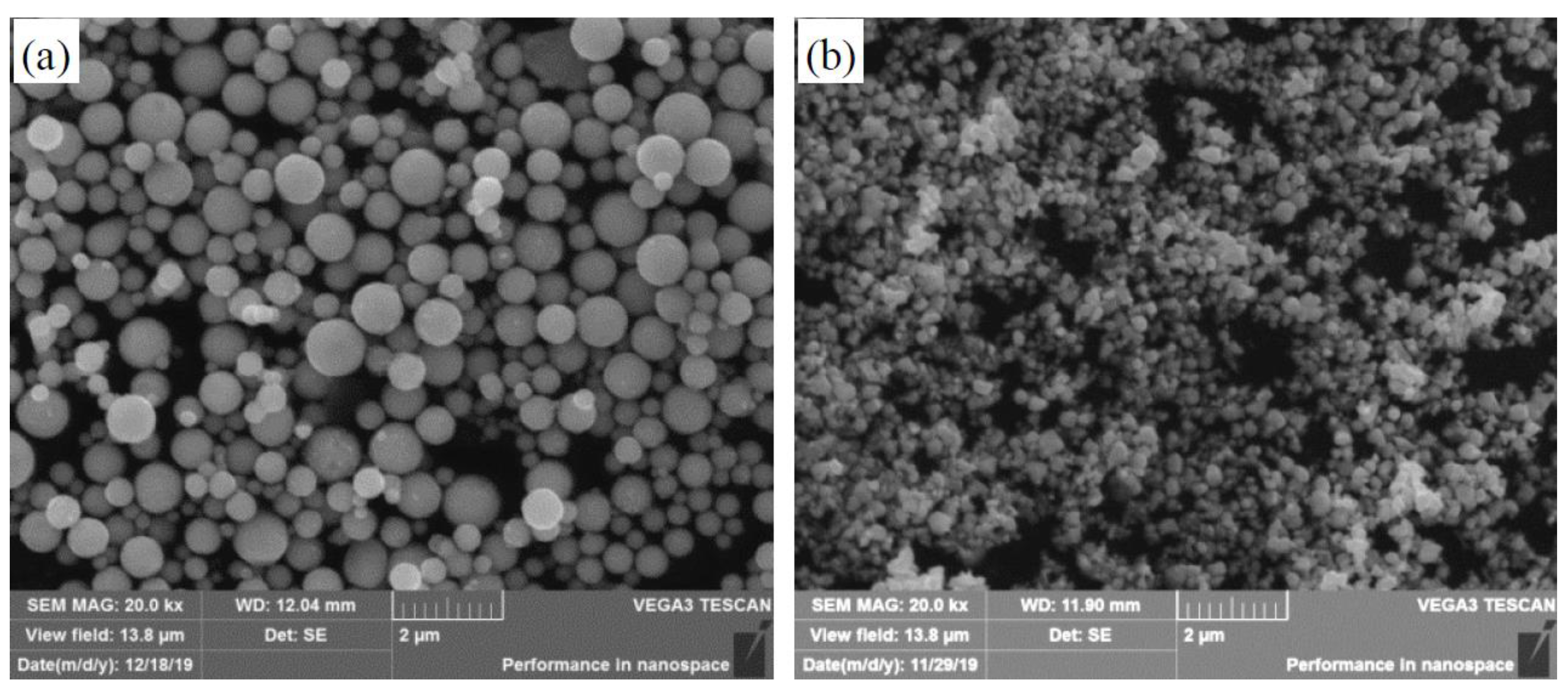



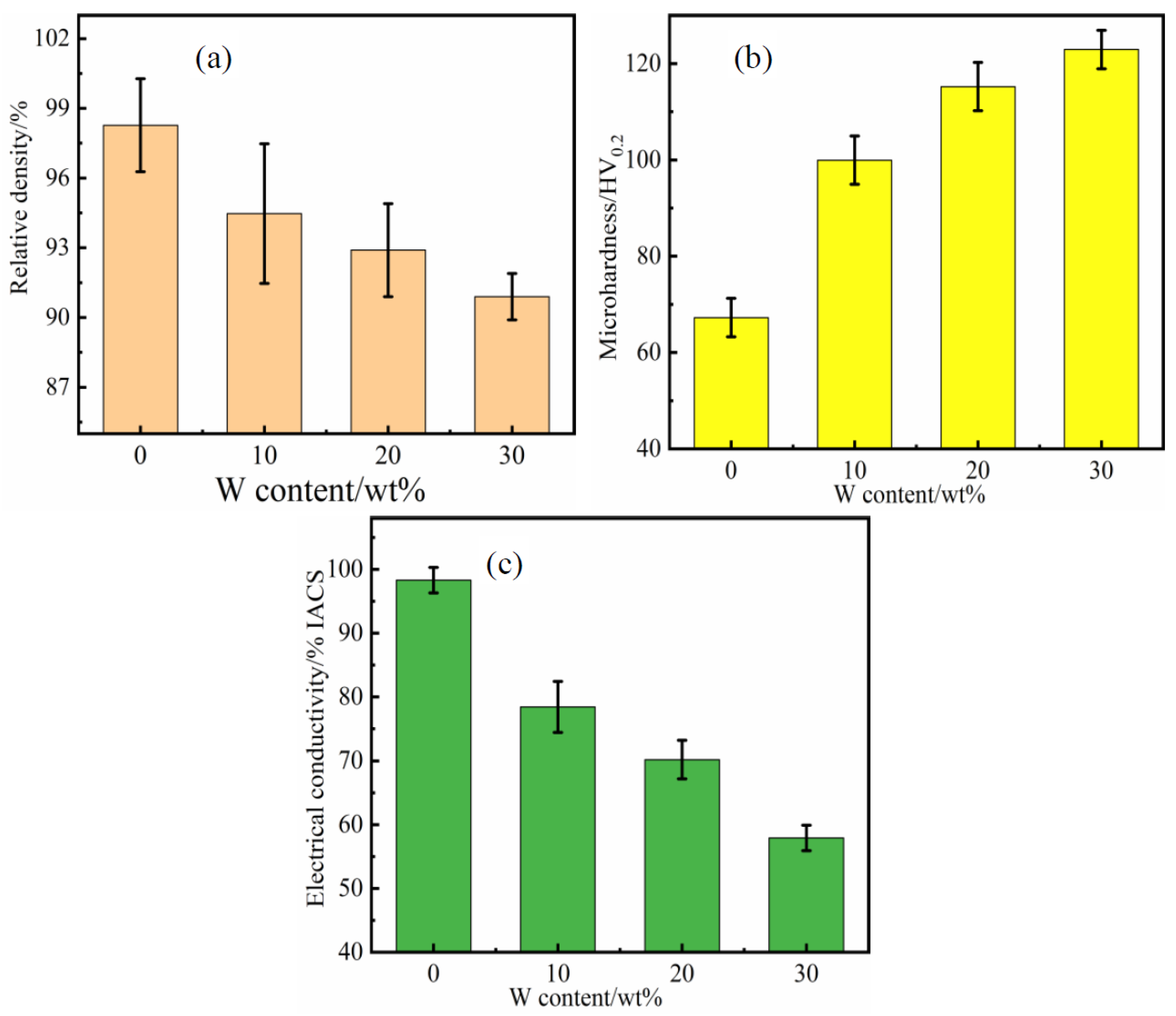




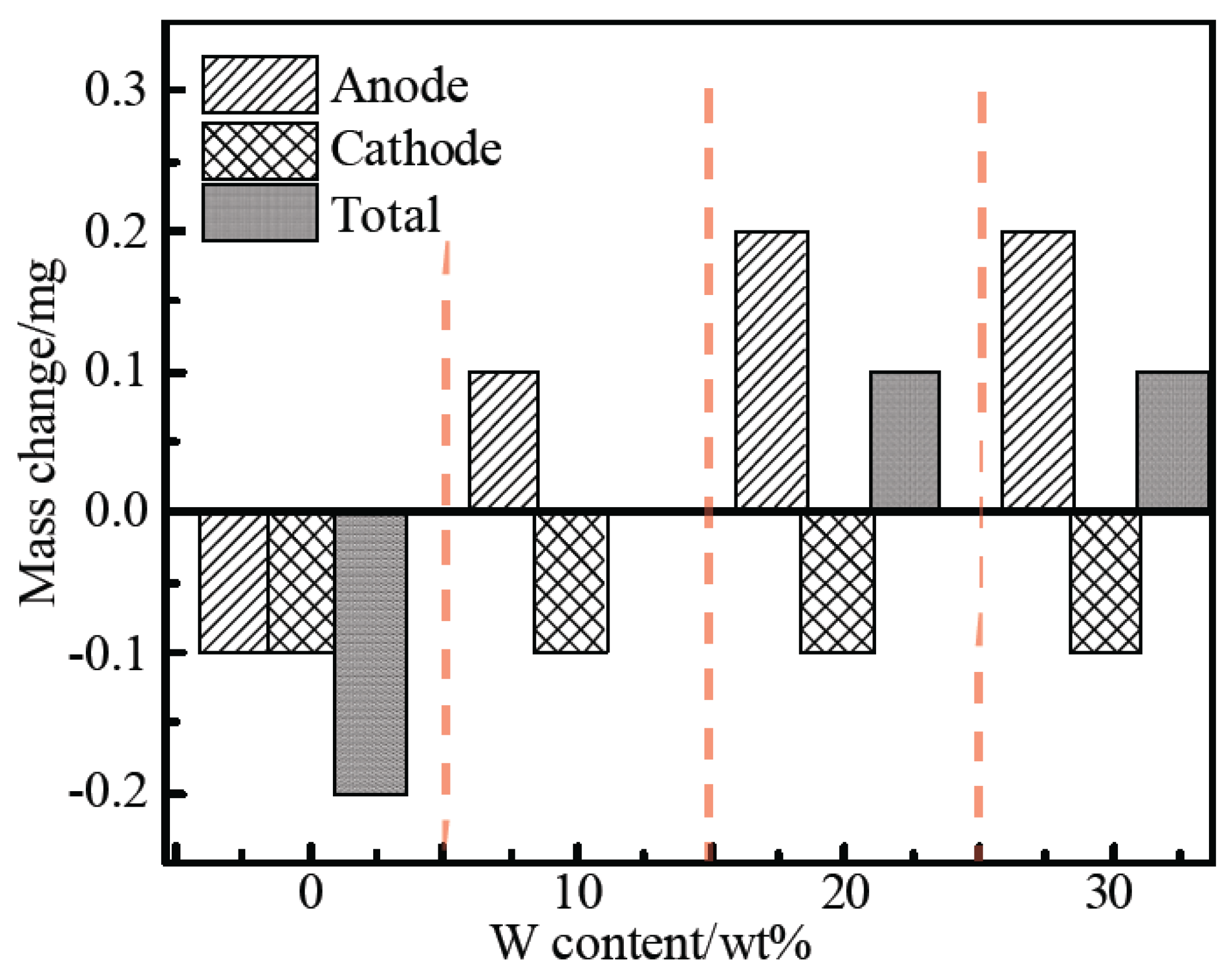
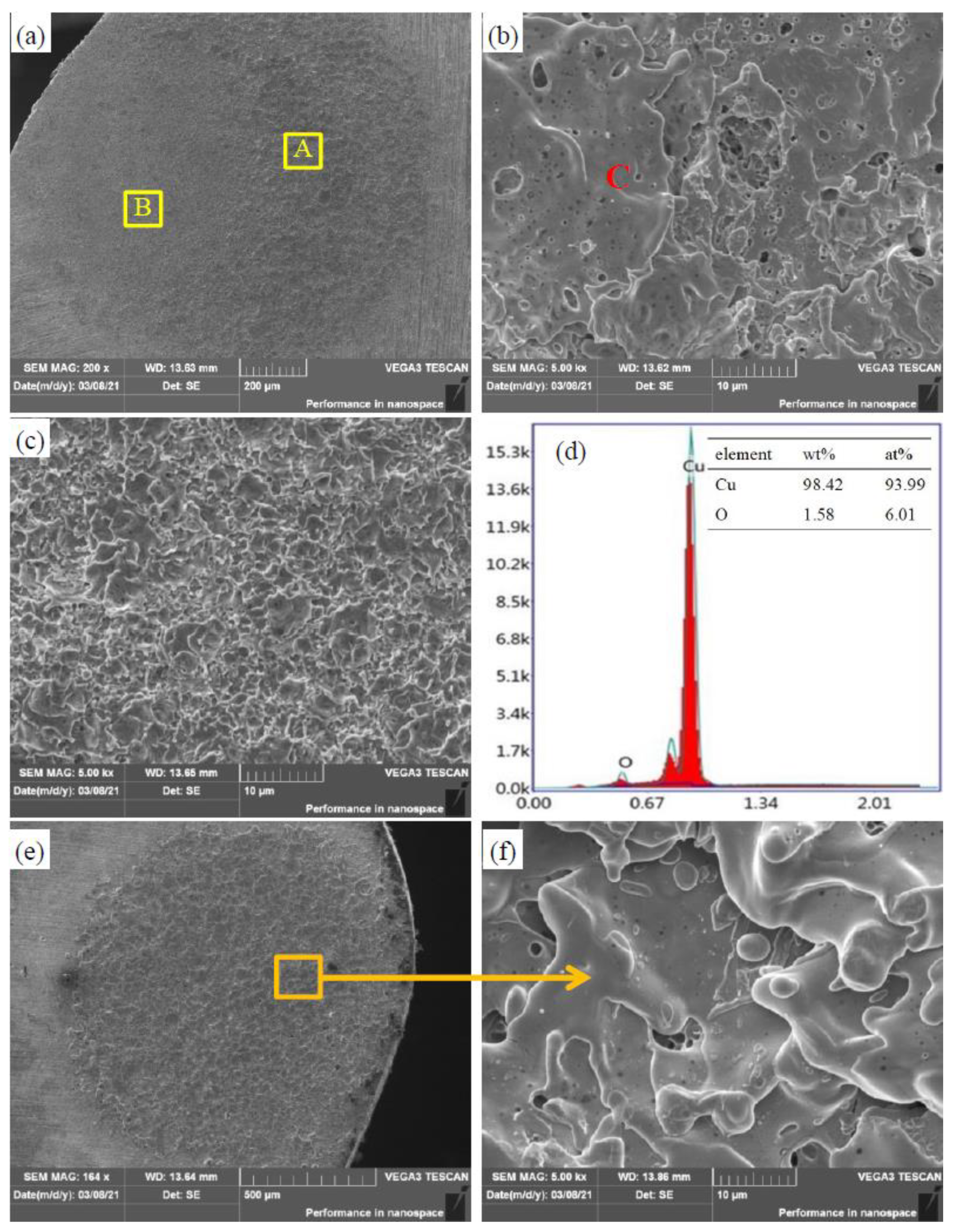
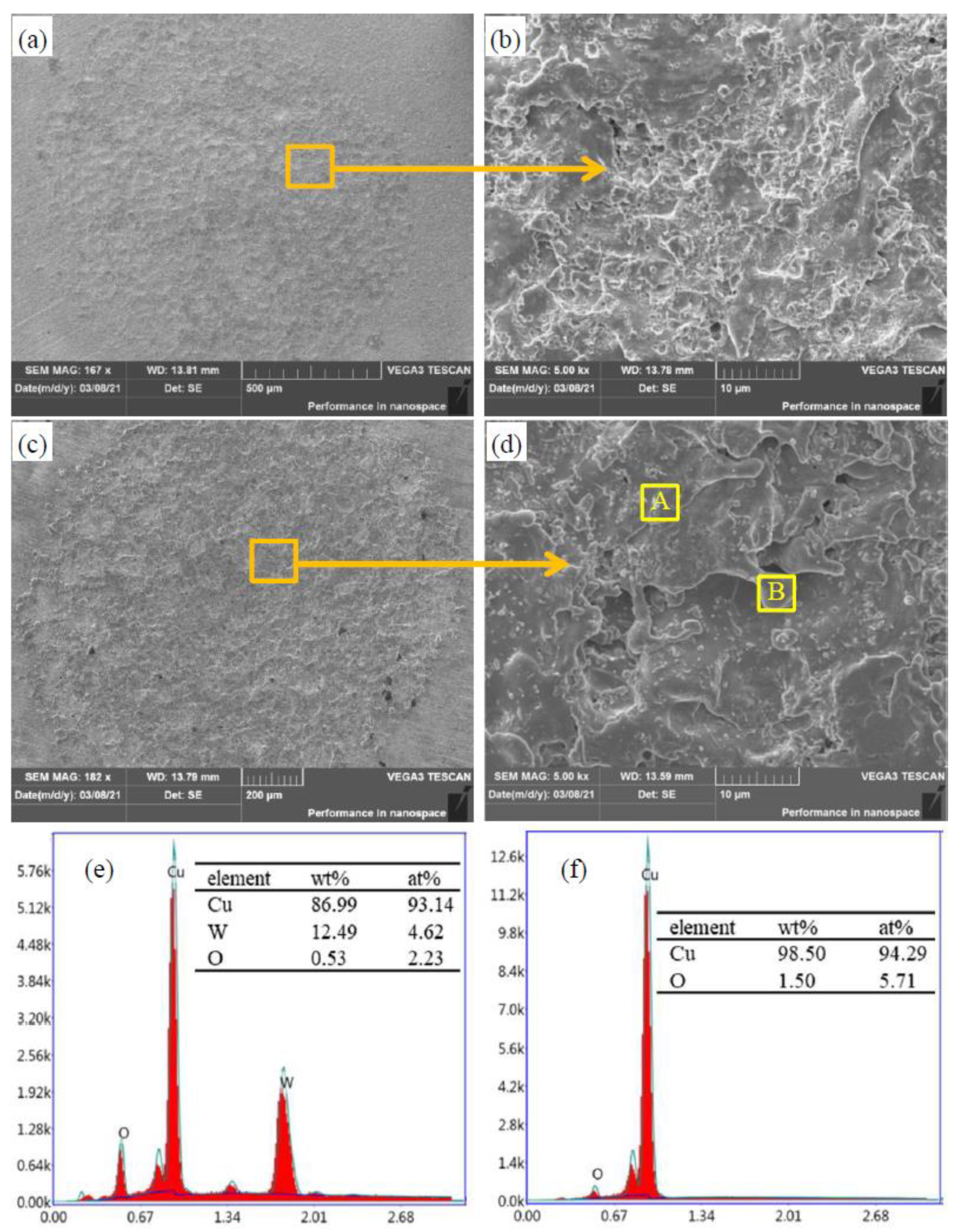
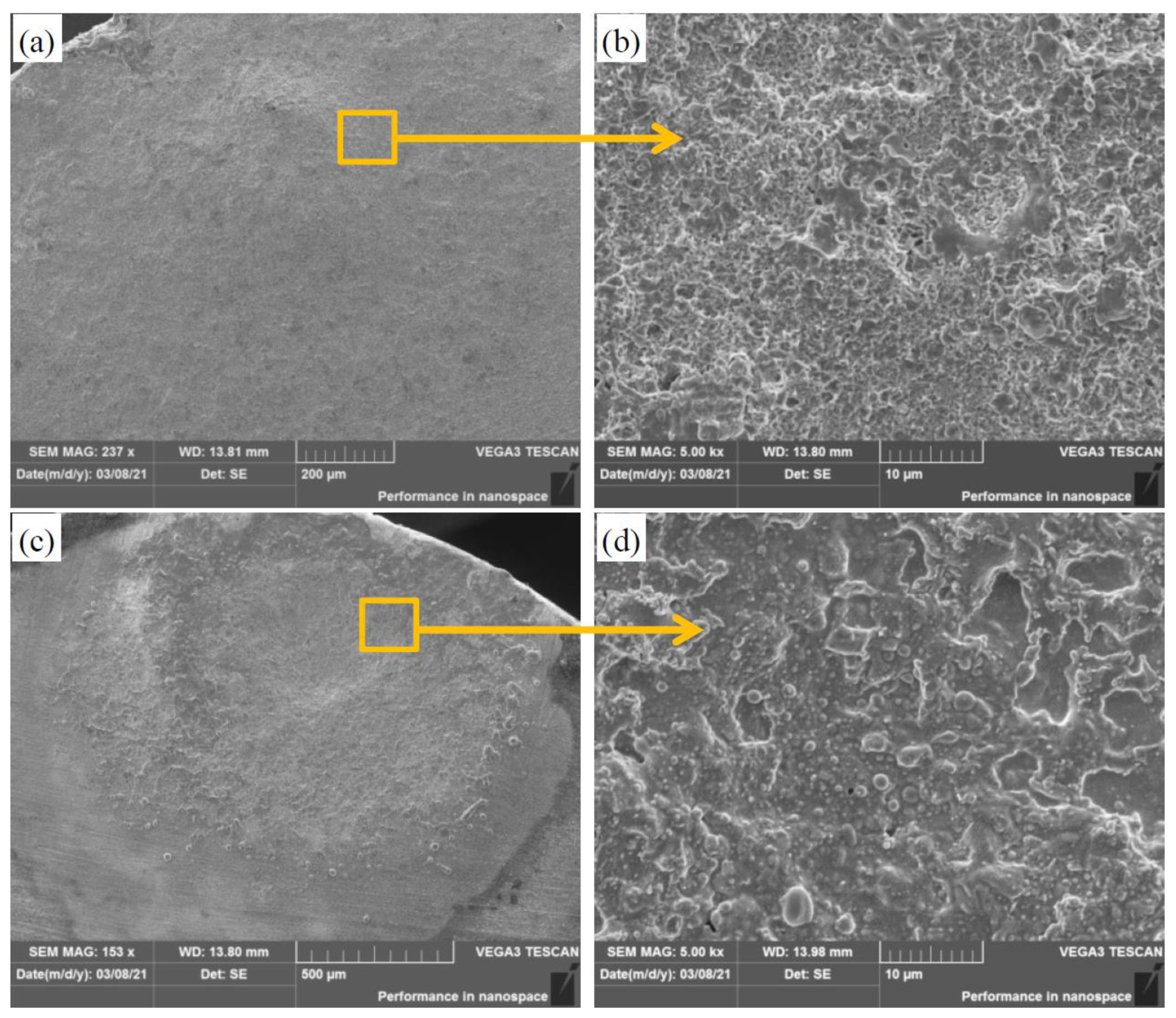
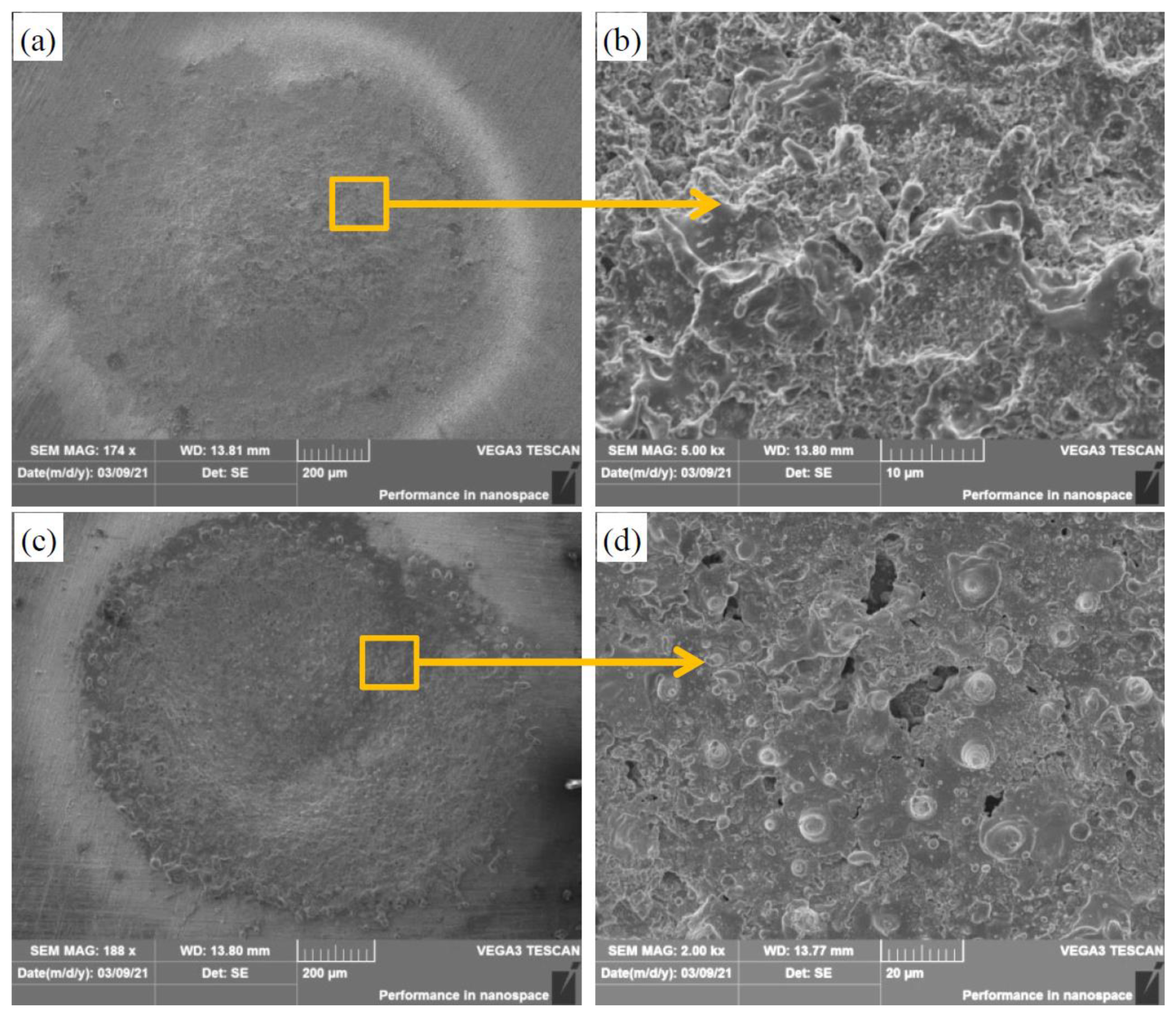
| Parameter | Value |
|---|---|
| Contact shape/mm | Φ 4 × 10 mm |
| Number of contacts | 5000 |
| Voltage/V | 20 |
| Direct current/A | 20 |
| Closing pressure/cN | 40 |
| Motion frequency/(times·min−1) | 60 |
Publisher’s Note: MDPI stays neutral with regard to jurisdictional claims in published maps and institutional affiliations. |
© 2022 by the authors. Licensee MDPI, Basel, Switzerland. This article is an open access article distributed under the terms and conditions of the Creative Commons Attribution (CC BY) license (https://creativecommons.org/licenses/by/4.0/).
Share and Cite
Li, X.; Zhang, M.; Zhang, G.; Wei, S.; Wang, Q.; Lou, W.; Liang, J.; Chen, L.; Xu, L.; Zhou, Y.; et al. Influence Evaluation of Tungsten Content on Microstructure and Properties of Cu-W Composite. Metals 2022, 12, 1668. https://doi.org/10.3390/met12101668
Li X, Zhang M, Zhang G, Wei S, Wang Q, Lou W, Liang J, Chen L, Xu L, Zhou Y, et al. Influence Evaluation of Tungsten Content on Microstructure and Properties of Cu-W Composite. Metals. 2022; 12(10):1668. https://doi.org/10.3390/met12101668
Chicago/Turabian StyleLi, Xiuqing, Minjie Zhang, Guoshang Zhang, Shizhong Wei, Qi Wang, Wenpeng Lou, Jingkun Liang, Liangdong Chen, Liujie Xu, Yucheng Zhou, and et al. 2022. "Influence Evaluation of Tungsten Content on Microstructure and Properties of Cu-W Composite" Metals 12, no. 10: 1668. https://doi.org/10.3390/met12101668
APA StyleLi, X., Zhang, M., Zhang, G., Wei, S., Wang, Q., Lou, W., Liang, J., Chen, L., Xu, L., Zhou, Y., & Pan, K. (2022). Influence Evaluation of Tungsten Content on Microstructure and Properties of Cu-W Composite. Metals, 12(10), 1668. https://doi.org/10.3390/met12101668






